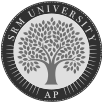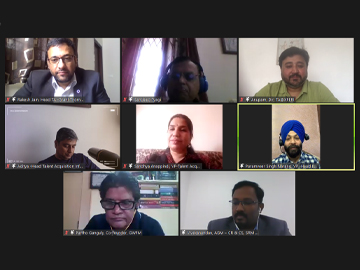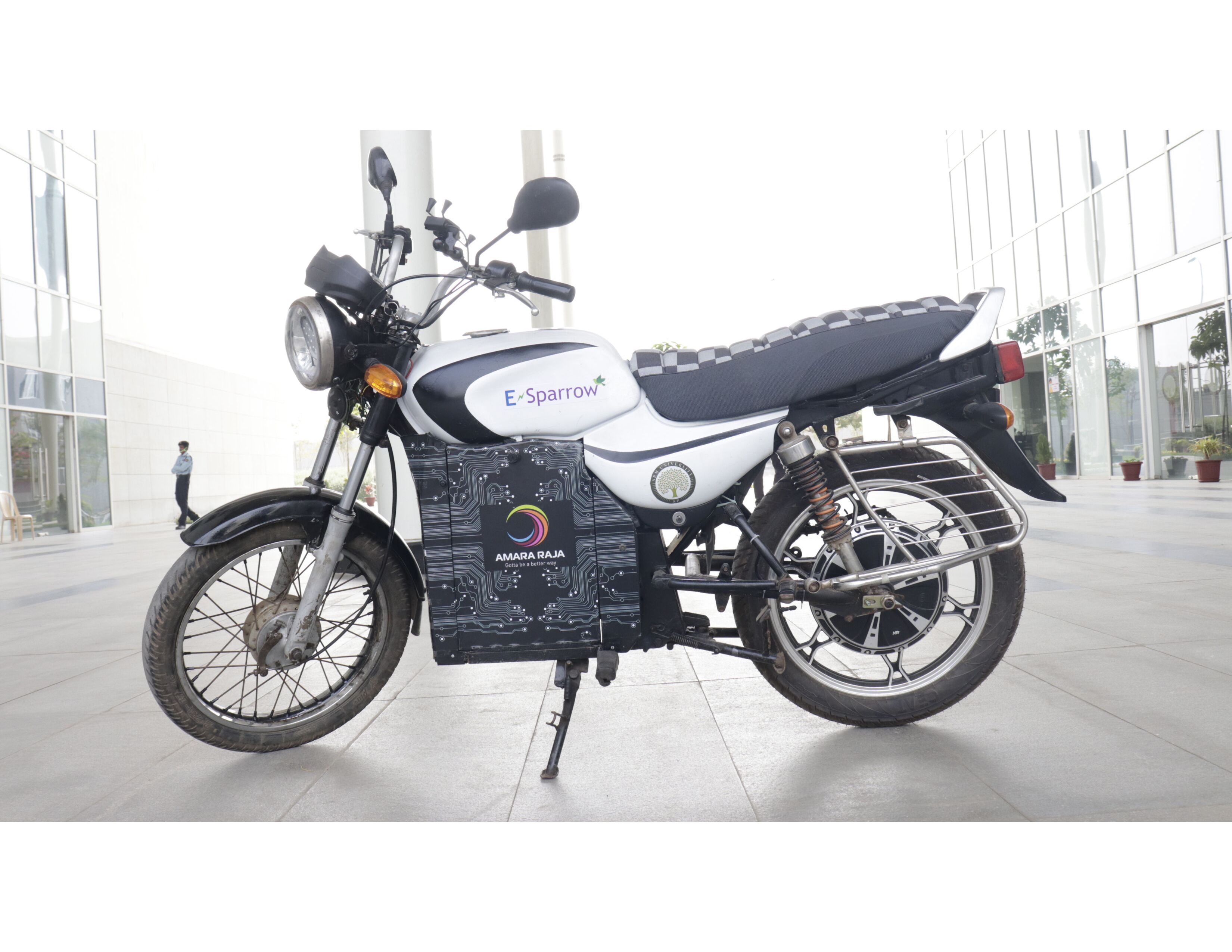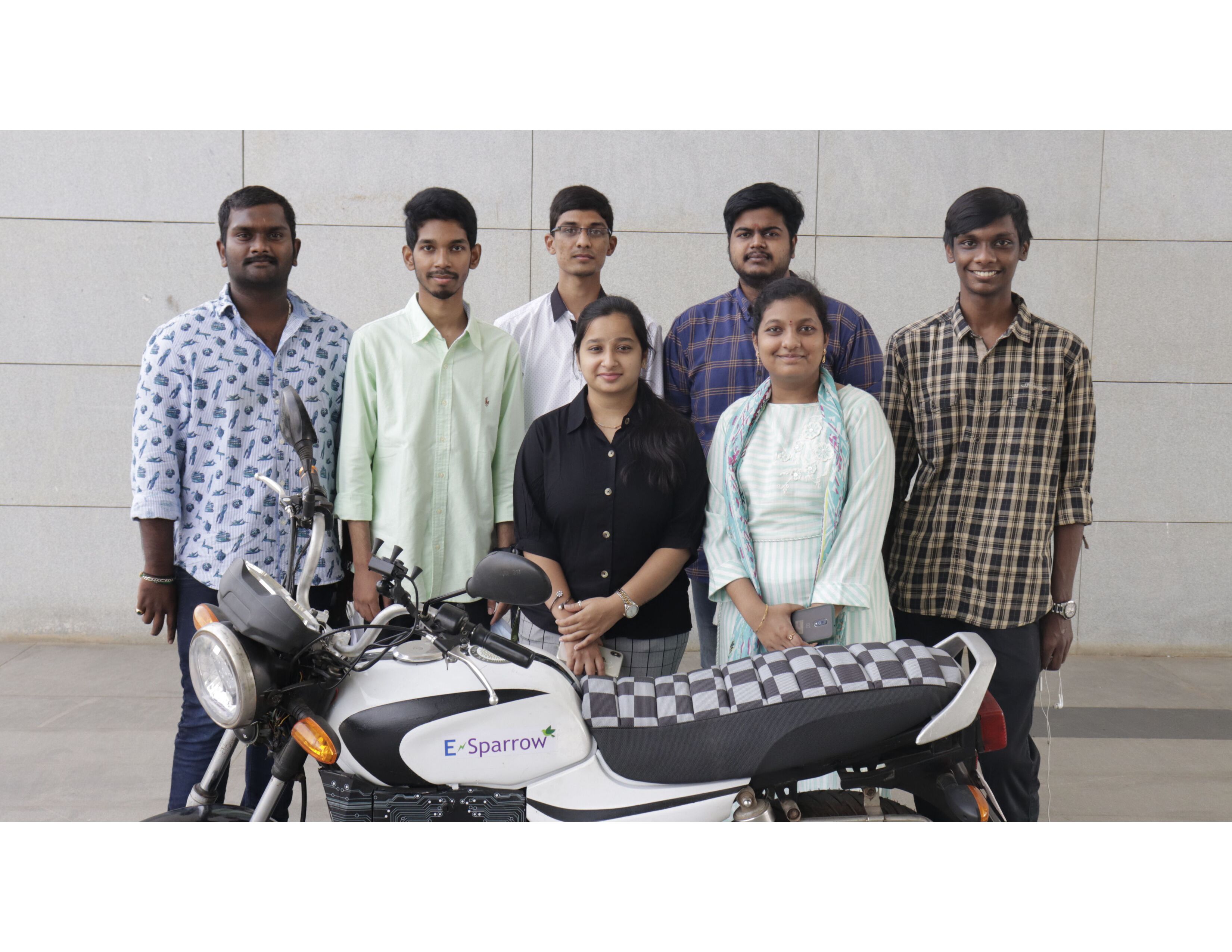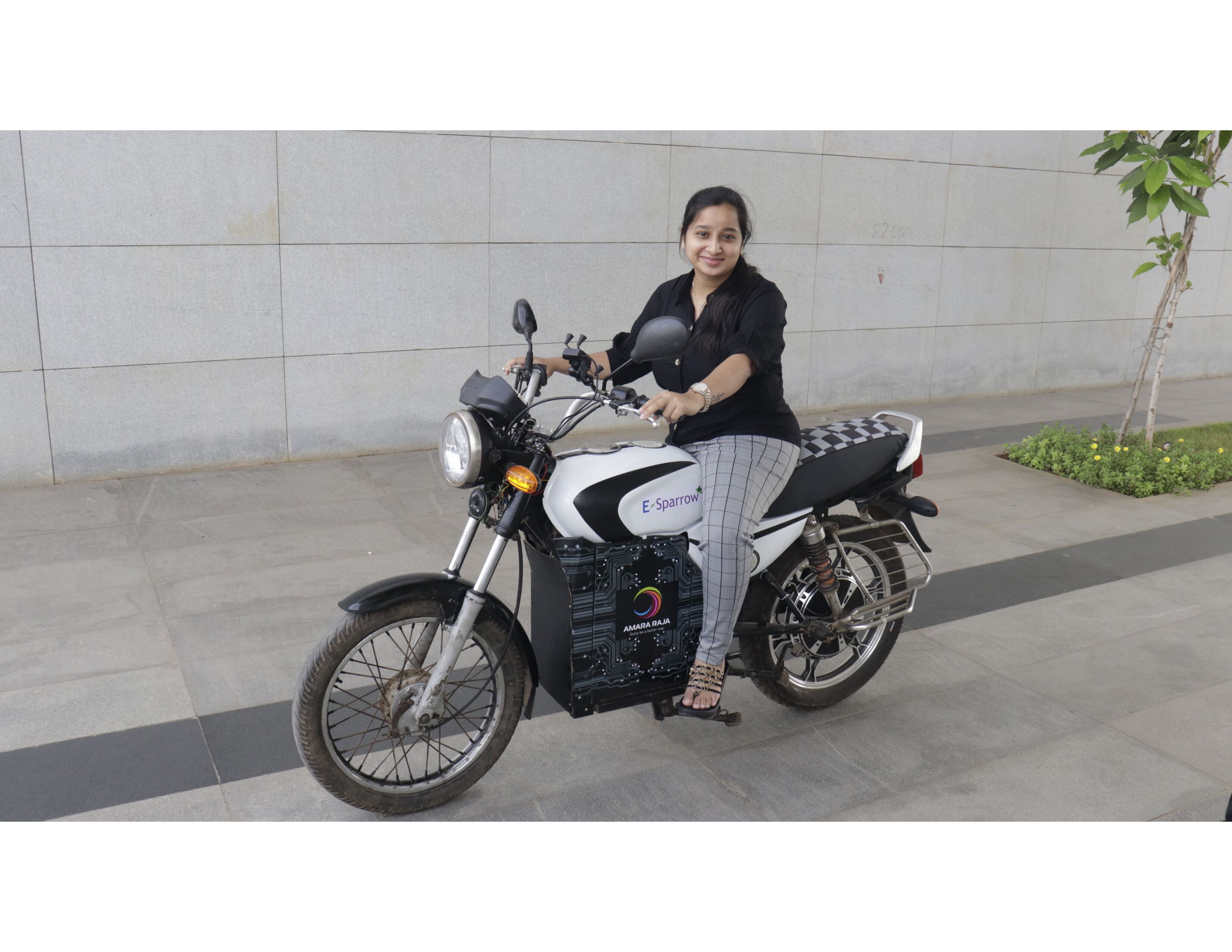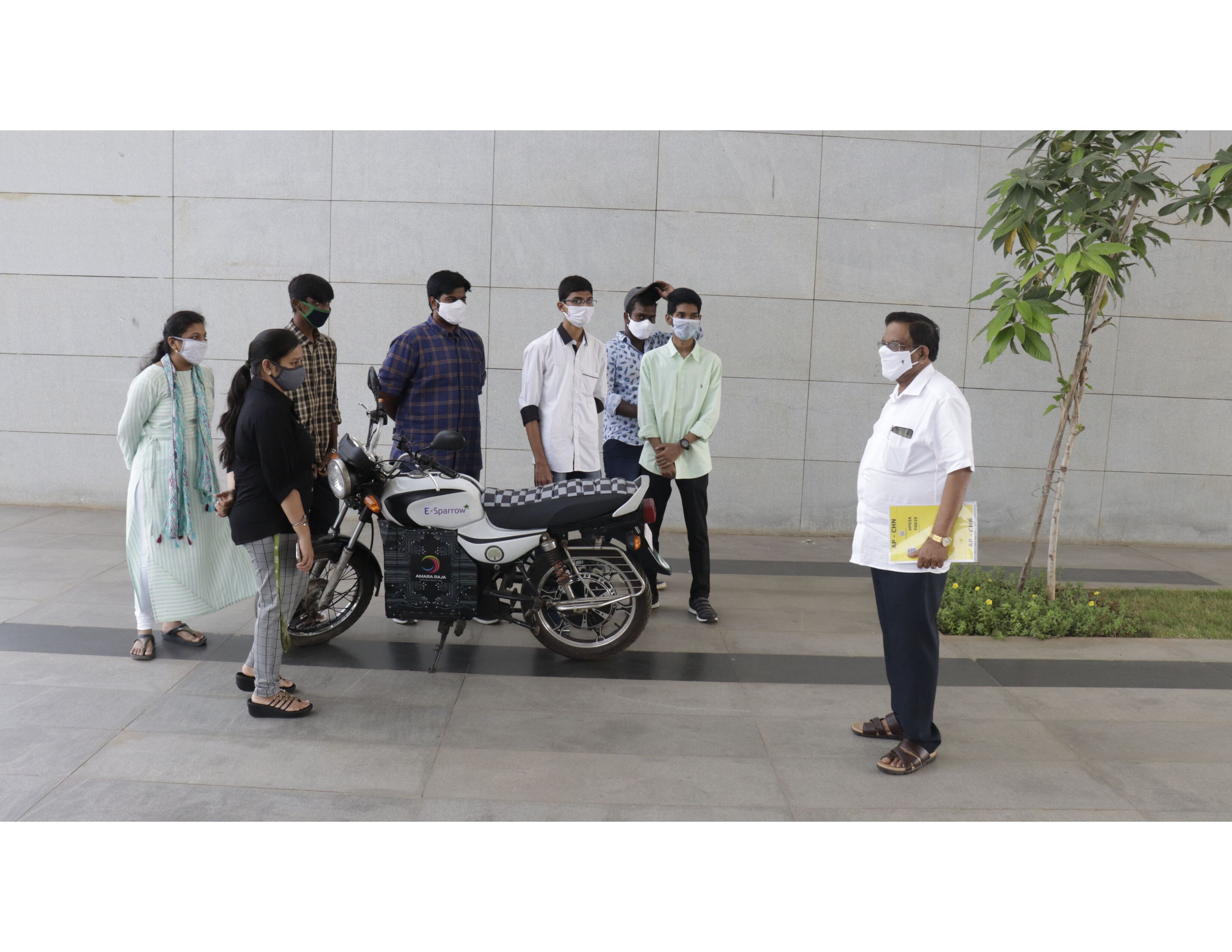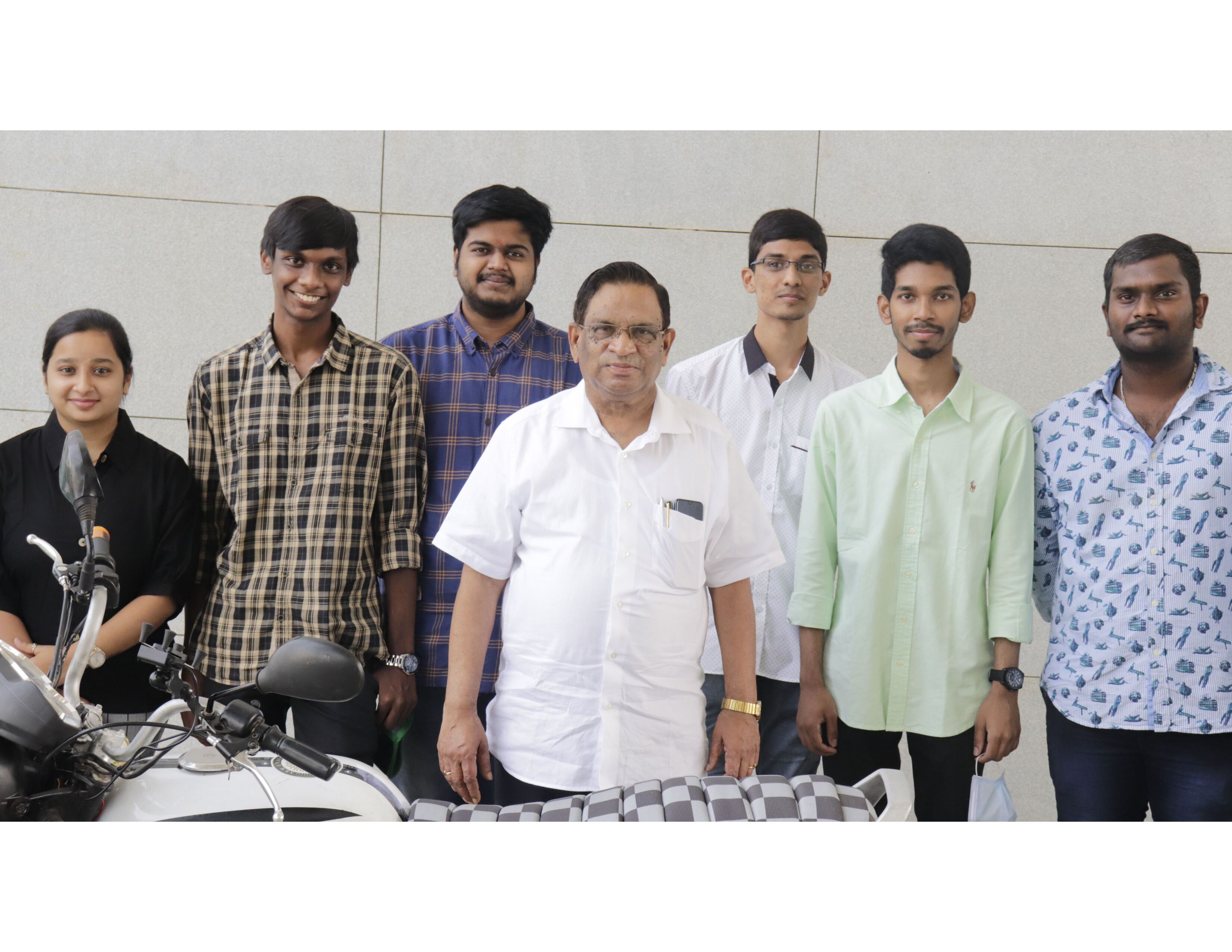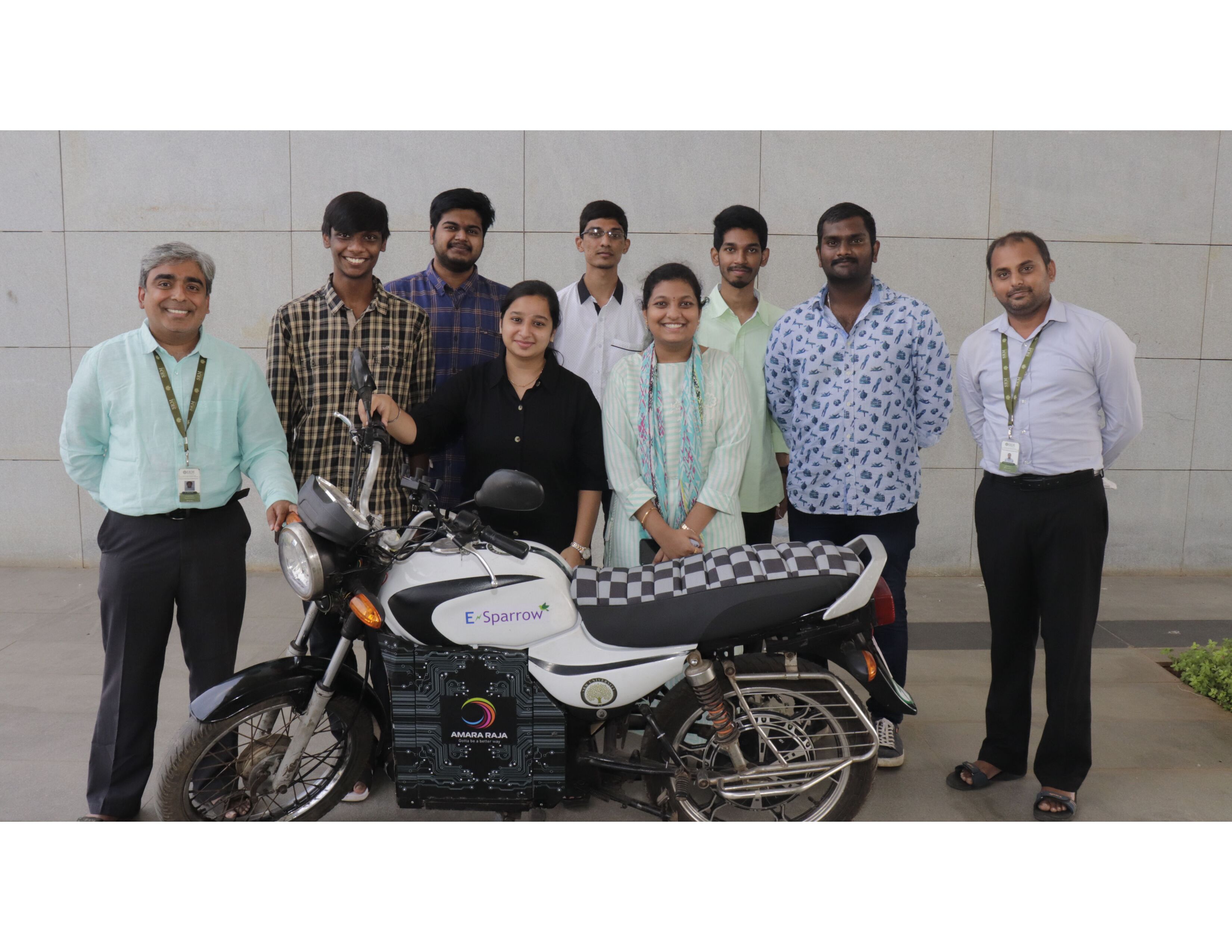SRM-AP All News
ALL News
- Dr Nimai Mishra analyze approaches to Amine-Free Synthesis of Colloidal Cesium Lead Halide Perovskite Nanocrystals March 6, 2021
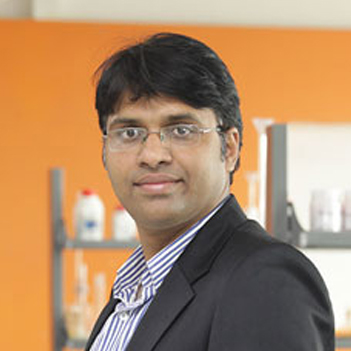 Dr Nimai Mishra, Assistant Professor, Department of Chemistry, SRM University-AP, Andhra Pradesh, accompanied by his research group encompassing students pursuing PhD under him, Mr. Syed Akhil and Ms. V.G.Vasavi Dutt have published a comprehensive mini-review titled “Amine-Free Synthesis of Colloidal Cesium Lead Halide Perovskite Nanocrystals” in the Journal “ChemNanoMat” (Wiley-VCH) with an Impact Factor of 3.4.
Dr Nimai Mishra, Assistant Professor, Department of Chemistry, SRM University-AP, Andhra Pradesh, accompanied by his research group encompassing students pursuing PhD under him, Mr. Syed Akhil and Ms. V.G.Vasavi Dutt have published a comprehensive mini-review titled “Amine-Free Synthesis of Colloidal Cesium Lead Halide Perovskite Nanocrystals” in the Journal “ChemNanoMat” (Wiley-VCH) with an Impact Factor of 3.4.Colloidal cesium lead halide (CsPbX3) perovskite nanocrystals (PNCs) are emerging disciplines in research aided by their exceptional optical properties and remarkable colour tunability. Oleic acid and oleylamine are the frequently used surface capping ligands in colloidal CsPbX3 synthesis. The oleylamine plays an important role in surface passivation and maintaining colloidal stability. However, in the long run, it is accountable for poor colloidal stability because of the facile proton exchange. This heralds to the formation of labile oleylammonium halide, which removes the halide ions from the Nanocrystals’ surface.
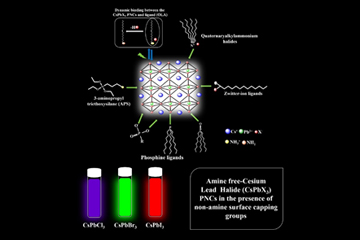 Leveraging on the synthetic toolboxes developed from decades of research into more traditional semiconductor nanocrystals, lately, researchers are focusing on creating various amine‐free synthesis approaches to improve the colloidal and photostability of CsPbX3 perovskite NCs. In this paper, Dr Mishra and his team encapsulated various amine‐free based synthetic routes of CsPbX3 (X=Cl, Br, I) PNCs that have been reported so far. They reviewed this progress in terms of their underlying synthetic approaches, and post‐synthetic treatment steps.
Leveraging on the synthetic toolboxes developed from decades of research into more traditional semiconductor nanocrystals, lately, researchers are focusing on creating various amine‐free synthesis approaches to improve the colloidal and photostability of CsPbX3 perovskite NCs. In this paper, Dr Mishra and his team encapsulated various amine‐free based synthetic routes of CsPbX3 (X=Cl, Br, I) PNCs that have been reported so far. They reviewed this progress in terms of their underlying synthetic approaches, and post‐synthetic treatment steps.Furthermore, Dr Mishra and his group analyzed the prospects of these perovskite nanocrystals in terms of their photo‐luminescence properties and device performances. Advancing, a deeper understanding of the role of precursors and ligands will significantly bolster the versatility of these amine‐free PNC materials.
To read the full paper: Please Click Here
Continue reading → - SRM University-AP and GWFM organised National Human Resource Conclave-2021 March 4, 2021
SRM University-AP organised the grandest National HR Conclave-2021, the grandest conglomerate of Human Resource experts, on February 27, 2021, in association with the Global Workforce Management Forum. The theme of the conclave for this year was “Leading the Disruption- The HR Agenda for 2021 “. Senior Human Resource Leaders from reputed companies such as KPMG, Airbus, IBM, Informatica, Standard Chartered Bank, Flipkart, Shriram Bio-seeds, NCC Ltd, NOKIA, Infosys BPO, Volvo Group, Reliance Jio, Western Digital, Visa, Accenture, Grant Thornton LLP, Xperi Corp, Western Digital, Kromozones Software Pvt. Ltd, Shriram Bioseeds, SS&C Technologies delivered keynote speeches and participated in Panel Discussions in the daylong event.
The event was started with the opening remarks of Prof V S Rao, Vice-Chancellor, SRM University-AP. In his speech, Prof Rao explained briefly how disruptive innovation had benefitted several industries such as the telecom and communication industry, automobile industry and others so far. It is high time to explore the opportunities in the Human Resource sector. “Covid-19 has provided us with many opportunities. Post-COVID era is the era of changed perspective and innovation, enabling the commoners to reap the benefits of technology,” said Prof Rao. He also stated the University encourages students to make use of the opportunities such as undergrad research, semester abroad program, student run-tech labs, etc to enhance their creative and innovative thinking.
Advancing the proceedings of the event, the founders of GWFM gave a brief understanding of their organisational structure and operations. Global Workforce Management Forum, founded in June 2014 by Dr Shiva Kumar and Partho Ganguly, is the world’s first WFM Forum. It is a non-profit professional organisation comprising of a group of Senior WFM & HR professionals committed to promoting the WFM movement on the global platform. Mr Ganguly set the tone for the conclave by addressing the present stagnation in Human Resource and opportunities to move forward.
In the first Keynote speech of the conclave Mr Unmesh Pawar, Partner – People Performance & Culture- KPMG India, explained how workforce reshaping is going to be a key element as we move forward. COVID-19 has changed the HR perspective globally. Mr Pawar took some realistic examples from whatever is happening worldwide and how it is creating shifts in overall organisational behaviour and operations.
The event progressed with a few panel discussions. Commenting on the importance of Digital, Data and Disruptions, the panel agreed that data analytics is crucial in today’s world, where we are standing on the verge of digital transformation. Predictive data analysis is being used to make business decisions. It is very important to have a sharp and clear objective to move forward in this field with countless opportunities.
Advancing into the event, Mr Suraj Chetri, Director HR Airbus India illuminated the audience with his strategic keynote on The Future of HR. “Start-ups are the future. Larger conglomerates will break into smaller companies with the abolishment of hierarchy. A lot of focus will be in healthcare and safety with special emphasis on mental health,” said Mr Chetri. According to him, a smart workplace is going a play a major role in the future. Technology will support employees to carry out several activities in a seamless way. It is going to impact the workplace culture and office management. Machine learning, data-driven automation, physical as well as virtual connectivity and Team collaborations are going to sustain in the future.
In another discussion on HR strategies to build flexibility, adaptability, and agility, the panel agreed on that every crisis goes through a time of recovery. This is a recovery phase. What is needed is adaptability as a skill. People are now looking for adaptability as the most important tool and hiring criteria. There are many tools and technologies to aid the recruitment process. But that is for ease of administration. More important is how one positions himself? Students should be focused from the beginning to create their own brand, deciding their selling points and USPs.
While speaking on the Future-proofing workforce 2020: Upskilling employees for future-oriented career trajectories, Mr Augustus Azariah, Human Resource Leader IBM mentioned that organisations used to build skills, capabilities, competencies, risk appetite among the employees. These skills are now being used to stay afloat in the storm called COVID-19. Analytics says storm riders are highly adaptable, willing to take risks with the resilience to get teams together. “If we walk through a journey of how HR has evolved over the years, we will find that it used to be process-driven, but now it is experiential and result- oriented. Conversion of data into actionable insights, design thinking, awareness of market trends, proactive learning and upskilling are the tools that employees of the future will need. To be an essential part of the future, one has to be digitally aware with a work experience consistent with his customers’ experience along with proper sensitisation in the workplace with the changed demographics,” advised Mr Azariah.
Over 25 Human Resource experts joined the conclave to share their view and usher in the way forward for the students. the conclave provided food for thought for the fellow recruiters as well as the students were highly motivated to listen to the experts speaking on real time problems with a solution. Mr Vivekanandan, Assistant Director-CR&CS, SRM University-AP, cordially thanked all the speakers, panel members, and the GWFM for their efforts to make the conclave a grand success.
Continue reading → - ECE Undergrads developed AI-based communication app for deaf and blind March 3, 2021
Won prestigious i-Hack Alpha with a cash prize of $2300
 Department of Electronics and Communication Engineering rejoices in the exhilarating success of Harsha and Mahesh, the winners at iHack Alpha Hackathon. iHack Alpha was an AI-Hackathon, where developers from all backgrounds were invited to solve real-world problems with innovative AI solutions powered by sentient.io AI and Data platform. Unlike the usual hackathons, it was conducted over three weeks, starting from December 2, 2020, and finished on December 27, 2020, and participants were supposed to present a full-fledged application. Four themes were given to participants to work on in the hackathon- 1) Use of AI in retail 2) Use of AI in Customer service 3) Use of AI in media 4) Use of AI in Accessibility.
Department of Electronics and Communication Engineering rejoices in the exhilarating success of Harsha and Mahesh, the winners at iHack Alpha Hackathon. iHack Alpha was an AI-Hackathon, where developers from all backgrounds were invited to solve real-world problems with innovative AI solutions powered by sentient.io AI and Data platform. Unlike the usual hackathons, it was conducted over three weeks, starting from December 2, 2020, and finished on December 27, 2020, and participants were supposed to present a full-fledged application. Four themes were given to participants to work on in the hackathon- 1) Use of AI in retail 2) Use of AI in Customer service 3) Use of AI in media 4) Use of AI in Accessibility. Harsha and Mahesh chose to work on the use of AI in the Accessibility theme, where they were asked to build an AI – solution using the sentient.io services. The whole hackathon was divided into three phases 1.) Ideation Phase 2) Build Phase 3) Finals.
Around 1083 teams participated across countries such as India, Malaysia, the Philippines, Indonesia, and Singapore.Harsha and Mahesh found their inspiration in the story of Helen Keller and decided to build an app with ease of accessibility for the blind and deaf persons. As Annie Sullivan used to help Helen in her communication, Harsha and Mahesh thought, why can’t they create an app which can be installed on the mobile phone and will do the same! The duo turned this crazy idea into reality by developing Artificial Voice- a communication app for the blind and deaf. Artificial Voice is a bidirectional communication app for the deaf and blind to send and receive messages with the help of AI-based technology such as Automatic Speech recognition, Text to speech converter, Audio format converter.
The whole Hackathon was broadcasted online. Harsha and Mahesh’s presentation on Artificial Voice received high praise and acclaims from the judges, and the Team SRMAP(aka Team Square) secured first place in the prestigious i-Hack Alpha hackathon with a grand cash prize of $2300. Harsha is currently pursuing his 3rd year B. Tech Studies whereas Mahesh is in the 2nd year of his undergraduate studies at the Department of Electronics and Communications Engineering. “This success at i-Hack Alpha hackathon has boosted our confidence. We are working on better versions of the app and some other projects that can contribute to society,” said Harsha.
Continue reading → - Young researcher presents research paper amidst scholars at global conference – ICCCS 2020 March 3, 2021
Nikhila Korivi offers revolutionary approach to ensure Data Security
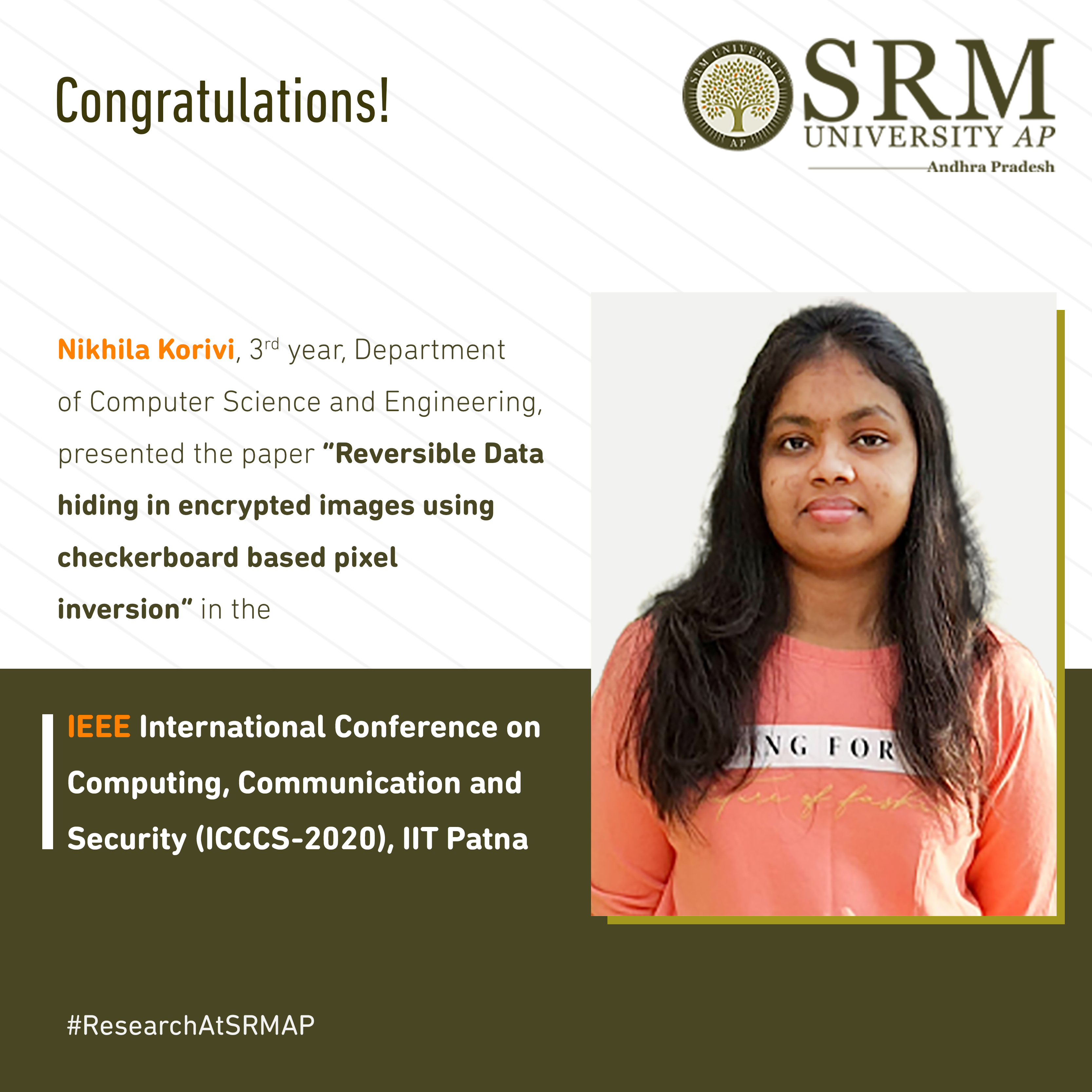 Nikhila Korivi, third year, Department of Computer Science and Engineering, SRM University- AP, Andhra Pradesh was steered by Dr Manikandan V M, Assistant Professor, Department of CSE, to present the pioneering research paper “Reversible Data hiding in encrypted images using checkerboard based pixel inversion” in the IEEE International Conference on Computing, Communication and Security (ICCCS-2020), IIT Patna, held on October 14-16, 2020.
Nikhila Korivi, third year, Department of Computer Science and Engineering, SRM University- AP, Andhra Pradesh was steered by Dr Manikandan V M, Assistant Professor, Department of CSE, to present the pioneering research paper “Reversible Data hiding in encrypted images using checkerboard based pixel inversion” in the IEEE International Conference on Computing, Communication and Security (ICCCS-2020), IIT Patna, held on October 14-16, 2020.Nikhila and her mentor, Dr Manikandan V M, worked on the paper conjointly for which, she is profoundly grateful to the professor. She says, “I thank Dr Manikandan and my other professors at SRM University-AP for their continuedguidance that inspired me to do research. Their encouragement propelled me to successfully present the research paper at ICCCS-2020, a conference revered by the entire scientific community.”
Nikhila has been keen on exploring and broadening her horizon of knowledge. Right from her early undergraduate days, Nikhila was intrigued by Information Security, an emerging discipline in the modern era. Soon she recognized that Reversible Data Hiding is an active research area in the realm of Information Security, which has extensive application in Medical Image Transmission, and Cloud Computing.
On approaching her professor, Dr Manikandan enthused Nikhila to embark on the research work and propose a new Reversible Data Hiding scheme in encrypted images by using a checkerboard pattern-based pixel inversion technique. Nikhila informs, “The proposed scheme ensures a better bit error rate without compromising on the embedding rate. The algorithms were implemented using Matlab-2019 and the experimental studies of the proposed scheme have been carried out using a standard image dataset (USC-SIPI) managed by the University of Southern California.”
This revolutionary approach is immensely beneficial when it comes to Data Security, and it is widely implemented in medical image transmission along with many other sectors. Fostering her interest in pursuing research and advanced studies, Nikhila plans to enhance her research work by focusing on designing and developing new Reversible Data Hiding schemes with better embedding rates without compromising other efficiency parameters such as computational complexity, robustness, and bit error rate.
Continue reading → - A book by Dr Lakhveer Singh featured in the list of Best Waste Management books February 22, 2021
Converting waste to fuel: way forward to a resilient planet
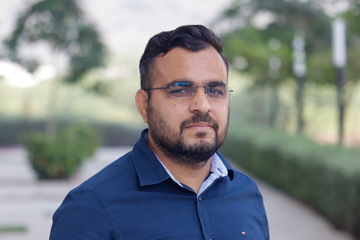 Dr Lakhveer Singh, Assistant Professor, Department of Environmental Science published a book titled “Waste to Sustainable Energy: MFCs – Prospects through Prognosis”. This book has been featured in the list of Best Waste Management books of all time by CNN, Forbes, and Inc-Book Authority. The book has been awarded this stature by venerated reviewers of the International Expert Committee, as well as global leaders of the discipline.
Dr Lakhveer Singh, Assistant Professor, Department of Environmental Science published a book titled “Waste to Sustainable Energy: MFCs – Prospects through Prognosis”. This book has been featured in the list of Best Waste Management books of all time by CNN, Forbes, and Inc-Book Authority. The book has been awarded this stature by venerated reviewers of the International Expert Committee, as well as global leaders of the discipline. A Microbial Fuel Cells (MFC) bio-refinery treat water using microorganisms and converts waste products and byproducts into fuel. This entails efficient waste management along with contributing to the generation of renewable fuel, and products that foster sustainable development. Addressing the present challenges in waste management, bioenergy, bioproduct recovery, and commercial sustainability, this book on MFCs emphasize on an array of mechanisms, routes, and reaction engineering approaches for extensive transformation of waste to wealth.
Extensive use of fossil fuels for energy emits carbon dioxide and other harmful gases adversely affecting the environment and leading to soaring global warming. Subsequently, domestic, agricultural waste products from animal facilities, refineries, and industries cause a tremendous environmental burden. Energy systems from MFCs enable the treatment and recycling of wastes, preventing environmental problems, and offsetting the pollution loads. Dr Lakhveer informs, “We are aiming at ensuring a sustainable and resilient environment that eliminates any potential odds of future climate change. Though globalization has preceded the escalation in production processes, a significant quantum of the waste materials generated through these practices can be transformed into fuels with the help of MFCs. Efficacies of this mechanism would ensure a paradigm shift built on the principles of sustainability.”
This book focuses on the MFCs with various combinations of substrates generating bioelectricity with valued co-products. Essentially, the book provides fundamental ideas on MFC technologies, entailing various design and modeling aspects with examples. Further, the book illustrates distinctive aspects of basic sciences, reactor configuration, application, and market feasibility of MFCs. Critically assessing the feasibility of waste-powered MFCs for sustainable bioenergy production, the book highlights the tradeoff between resource needs and energy production. The extensive research and details in the book will help academicians, entrepreneurs, and industrialists to understand the scope and challenges empowering them to select unique, and specific integrated approaches in unit processes.
Advancing his research to mitigate environmental issues, Dr Lakhveer will continue to explore bioenergy, water treatment, bioelectrochemical systems, and nanomaterial synthesis for energy and water applications, and bioreactors development. Also, he is presently editing two books that address several environmental challenges.
Continue reading → - “Jumbo Catalyst” to resolve real-time catalytic challenges: SRMAP conceded the patent February 16, 2021
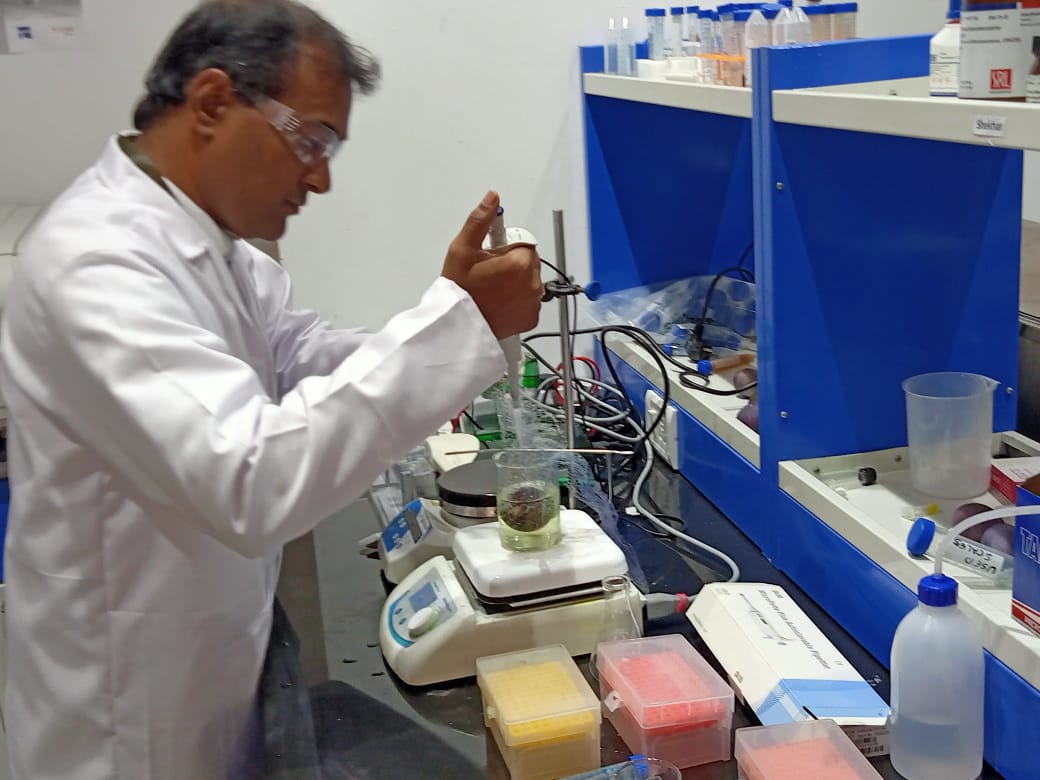 Dr Anil K Suresh is a renowned scientist in the area of Bio-Nanotechnology . The prestigious Ramalingaswami Fellow is now an Associate Professor at the Department of Biological Sciences, SRM University-AP. He recently developed an innovative catalyst that he named “Jumbo Catalyst” to address the demanding challenges in heterogeneous catalysis. This 3D-megacatalyst generated using “intact eggshell” food-waste is hand-removable with an overall surface area of ~ 78 cm2, featuring wide catalytic support and is highly stable in polar and non-polar solvents for ultra-efficient heterogeneous catalysis. This megacatalyst can overcome the existing limitations such as cost, time, labour, sustainability, mechanical stability, diverse-reactions, large-volumes, aggregation, recyclability and precursor recovery. Dr Anil K Suresh owns the copyrights for this pathbreaking invention through a published patent.
Dr Anil K Suresh is a renowned scientist in the area of Bio-Nanotechnology . The prestigious Ramalingaswami Fellow is now an Associate Professor at the Department of Biological Sciences, SRM University-AP. He recently developed an innovative catalyst that he named “Jumbo Catalyst” to address the demanding challenges in heterogeneous catalysis. This 3D-megacatalyst generated using “intact eggshell” food-waste is hand-removable with an overall surface area of ~ 78 cm2, featuring wide catalytic support and is highly stable in polar and non-polar solvents for ultra-efficient heterogeneous catalysis. This megacatalyst can overcome the existing limitations such as cost, time, labour, sustainability, mechanical stability, diverse-reactions, large-volumes, aggregation, recyclability and precursor recovery. Dr Anil K Suresh owns the copyrights for this pathbreaking invention through a published patent.Catalysis is widely used in various industrial processes to produce desired end products. Research in this area substantially evolved from using organic reagents and metals to the adaptation of metal-based nanoparticles. Supported catalysis is a fast-emerging class of catalysis using inert and supportive frameworks with a potential for efficient reuse and recovery of the catalyst. Synthesis of metal-organic frameworks, fibres, polymers and hydrogel-based catalytic nanoparticle loadings are being reported. However, these are associated with intrinsic complexities and are produced using toxic ingredients, ecologically unbenign and are expensive.
The megacatalyst, generated by Dr Anil and his team using eggshell food-waste in the process, is autogenic, facile, cost-efficient and entirely biodegradable. Dr Anil strongly believes that theirs is the biggest catalyst developed so far. The intact eggshell provides an extensive support area for ultra-efficient catalysis. Applicability of this megacatalyst is so simple that even a layman can use it with ease. Moreover, this supported megacatalyst can be effortlessly removed from the reaction mixture post application as it can be recovered by hand. Catalytic reactions using the megacatalyst can be controlled as the tuff, and uniform coating protects the shedding of nanoparticles. Dr Anil Says, “We presume that the mega-size of the catalyst could be instrumental in several challenging applications. As a proof of concept, we selected three eclectic applications including- 1. Large volume sewage dye degradations, 2. Gram-scale hydrogenation of nitroarenes and 3. Transesterification of used oil to biodiesel- which are all difficult to achieve, highly challenging but are now practically feasible using our megacatalyst.”
“Keeping in mind the ultra-catalytic proficiency of our catalyst that can be simply resourced from continuously available eggshell waste, with minimal maintenance for the large scale practical implementation, we welcome interested beneficiaries from diverse heterogeneous catalysis sectors for bringing this innovation to execution,” Dr Anil asserted.
Continue reading →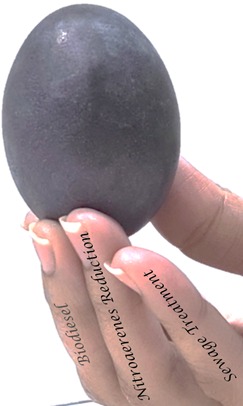 The team is currently investigating to design and fabricate other species of megacatalyst using other significant metal precursors and earth-abundant metals to expand the applicability in allowance of diverse reactions such as oxidation of CO, Methane, Mono/Polyhydric alcohols, hydrogenation of alkynes, Nitroaromatics and CO2.
The team is currently investigating to design and fabricate other species of megacatalyst using other significant metal precursors and earth-abundant metals to expand the applicability in allowance of diverse reactions such as oxidation of CO, Methane, Mono/Polyhydric alcohols, hydrogenation of alkynes, Nitroaromatics and CO2.
Dr Anil K. Suresh concluded that this breakthrough conception would not have been possible without the rigorous efforts of his team and the continuous support from the university management. Dr Anil Suresh thanked his PhD students Chandra Bhatt, Divya Parimi, Tharun Bollu and Madhura. Dr Anil especially thanked Professor D Narayana Rao, Pro-Vice-Chancellor, SRM University-AP for his extensive support in all his scientific endeavours since his association with the university. - Undergrad student receives envious internship offer from Adobe India with 1 LPM February 4, 2021
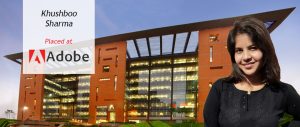 Khushboo Sharma is one of the brightest gems in the Department of Computer Science and Engineering. She is currently pursuing her third year in undergraduate studies. She has recently bagged an envious summer internship offer at one of the most reputed companies- Adobe India, a multinational software company. Through their women-only hiring challenge “SheCodes”, Khushboo not only bagged an internship offer but she may also have an opportunity of a Pre Placement Offer, upon successful review after this internship with attractive pay package. She will be joining Adobe India in May 2021 for the internship of 10-12 weeks with a stipend of 1 lakh rupees per month.
Khushboo Sharma is one of the brightest gems in the Department of Computer Science and Engineering. She is currently pursuing her third year in undergraduate studies. She has recently bagged an envious summer internship offer at one of the most reputed companies- Adobe India, a multinational software company. Through their women-only hiring challenge “SheCodes”, Khushboo not only bagged an internship offer but she may also have an opportunity of a Pre Placement Offer, upon successful review after this internship with attractive pay package. She will be joining Adobe India in May 2021 for the internship of 10-12 weeks with a stipend of 1 lakh rupees per month. Mr Vivekanandan, Assistant General Manager, Department of Corporate Relations and Career Services (CR&CS), says “It is a proud moment for the university. SRM University-AP is full of bright students with huge potential. It is our sincere responsibility to bring out the best in them and help them find the right place in the industry.” Khusboo asserted that the training process in the Department of CR&CS was rigorous. Be it attitude development or interview preparations, the CR&CS department has extended continuous guidance and support along with mock sessions. Mr Vivekanandan further informed that the training programmes of SRM University-AP are designed by the experts to make students prepare for every challenge that they might face in a competitive world. They even organise some training sessions that are company-specific. Needless to say, that the placement department is not ready to leave any stone unturned when it comes to the future of its students. The placement team thoroughly guided Khushboo in the four-month-long hiring process in Adobe.
Khushboo expressed her gratitude, saying that it would not have been possible for her to crack this challenge without the continuous guidance and support provided by her teachers and the placement team. The modernised industry-oriented curriculum helped her gain the necessary in-depth knowledge to excel in her studies. Khushboo is also a part of tech-based clubs of SRM university-AP and always strives to think something out of the box. Her zeal towards scaling new heights and perseverance her made her achieve this offer.
Continue reading → - Undergraduate students design e-bike for sustainable environment February 4, 2021
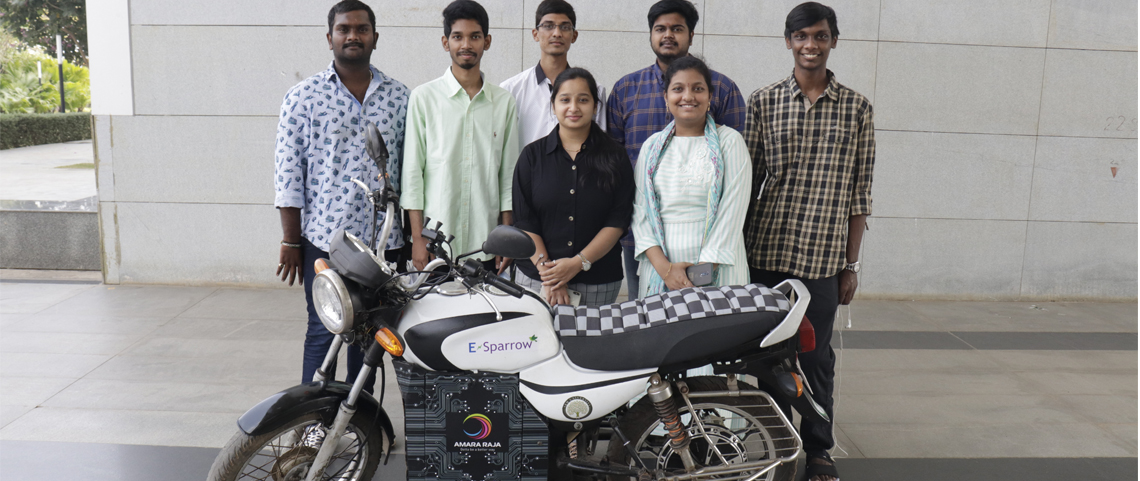
Advancing the celebration, Prof D Narayana Rao, Pro Vice-Chancellor, SRM AP took the virtual podium to comment “Science and Technology is the driving force for the economic development of India. We need to encourage young scholars by providing a vibrant and conducive research environment. Expanding the frontiers of knowledge by triggering interest among students must be the priority of the institutions. Also, focus should be on translational research with societal applications through collaborative research to make our nation a global leader.”
The team comprises of undergraduate students – Mr Raviteja Reddy, Mr A Chaitanya, Mr P M Aditya, Mr K Praveen, K Yeshashwini, A Sravya, K Vasu, and G Priyanka along with faculty members – Dr Venkata N Nori, Associate Professor, and Dr Panchagnula Jayaprakash Sharma, Assistant Professor, Department of Mechanical Engineering. Aditya reveals, “We endured several challenges in various aspects of retrofitting the conventional petrol motorcycle. Also, designing a portable battery system, enhancing the performance of the Hub motor, Chassis improvements, etc. enriched our understanding of electric vehicles and manufacturing techniques.”
Conversion of IC engine bike to an e-bike is considered to be a potential business venture by the team. Sharing their forthcoming plans, Aditya informs, “We are working on additional designs and ideas to incorporate the best possible features to make the e-bike more reliable. We heartily thank Prof D Narayana Rao, Pro Vice-Chancellor, for his continuous support. Also, Dr Venkata Nori and Dr Jayaprakash propelled us to create a steadfast model by relentlessly helping us in improving our design to make our model more cost-effective.”
- Prof Siva Sankar Y’s remarkable research paces up wireless data transmission February 1, 2021
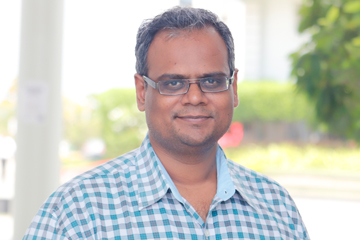 Prof Siva Sankar Y, Professor & Head, Department of Electronics and Communication Engineering, SRM University-AP, Andhra Pradesh published a research paper titled “60 GHz common gate single stage current reuse cascode LNA topology for high data rate applications” in the Journal of Electronic Materials. In the recent era, wireless communication has become essential in the lives of mankind. The data transfer rate of wireless systems varies from a few kilobits per second (kbps) to gigabits per second (Gbps), and the distance of communication supported by these technologies fluctuate from a few meters to kilometers.
Prof Siva Sankar Y, Professor & Head, Department of Electronics and Communication Engineering, SRM University-AP, Andhra Pradesh published a research paper titled “60 GHz common gate single stage current reuse cascode LNA topology for high data rate applications” in the Journal of Electronic Materials. In the recent era, wireless communication has become essential in the lives of mankind. The data transfer rate of wireless systems varies from a few kilobits per second (kbps) to gigabits per second (Gbps), and the distance of communication supported by these technologies fluctuate from a few meters to kilometers.Gbps transmission entails the transfer of huge data between different devices such as high-definition (HD) video cameras, smartphones, HD set-top boxes, HD DVD players, and high-definition printers. Realizing Gpbs transmission requires operating frequency of several tens of GHz to hundreds of GHz. To meet the escalating demand for high data transfer rates, wireless technologies are penetrating the millimeter wave technology domain, which supports transmission data rates up to Gbps within small distances.
 Layout of the proposed circuitMillimeter (mm) wave spectrum can be used for such high-speed wireless communication. Dr Siva Sankar informs, “One of the major challenges in realizing mm wave based transceivers is the design of the CMOS analog RF components. In the design of CMOS RF components, power dissipation, and speed are the two important and conflicting factors that lay stringent requirements on RF design. In our work, RF component design has been used in mmWave transceivers.”
Layout of the proposed circuitMillimeter (mm) wave spectrum can be used for such high-speed wireless communication. Dr Siva Sankar informs, “One of the major challenges in realizing mm wave based transceivers is the design of the CMOS analog RF components. In the design of CMOS RF components, power dissipation, and speed are the two important and conflicting factors that lay stringent requirements on RF design. In our work, RF component design has been used in mmWave transceivers.”Dr Siva Sankar and his research group developed a high frequency, low noise LNA that can be used in mmWave transceivers to facilitate high data transfer rates. The professor explains, “The designed LNA can be used in mm wave transceivers. The speed (operating frequency) of these components is chosen to be 60GHz because the spectrum around 60GHz is available for unlicensed operation in many regulatory domains including the USA, Japan, Canada and Australia.”. Advancing the research, Dr Siva Sankar and his research group will focus on high speed RF components such as mixers, PLL, and others to realize 60 GHz.
Continue reading → - DST- SERB grant awarded to Dr Sutharsan Govindarajan February 1, 2021
Alleviating healthcare challenges by augmenting efficacy of antibiotics
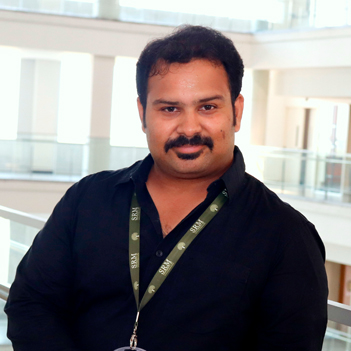 Dr Sutharsan Govindarajan, Assistant Professor, Department of Biological Sciences, SRM University – AP, Andhra Pradesh received an outlay of Rs 55 lakhs by the Department of Science and Technology (DST)- Science and Engineering Research Board (SERB), Government of India to advance the project “Mechanistic understanding of bacterial cytoskeleton inhibition by antibiotics and novel bacteriophage proteins”. The research grant is provided to support active researchers in undertaking research and development in the frontiers of Science and Engineering. Dr Sutharsan exclaims, “It is thrilling to see that my proposal has been accepted for funding. This is a huge recognition for the science that we do at SRM University – AP. Through this funding, I will be able to establish an independent molecular microbiology lab at the university.”
Dr Sutharsan Govindarajan, Assistant Professor, Department of Biological Sciences, SRM University – AP, Andhra Pradesh received an outlay of Rs 55 lakhs by the Department of Science and Technology (DST)- Science and Engineering Research Board (SERB), Government of India to advance the project “Mechanistic understanding of bacterial cytoskeleton inhibition by antibiotics and novel bacteriophage proteins”. The research grant is provided to support active researchers in undertaking research and development in the frontiers of Science and Engineering. Dr Sutharsan exclaims, “It is thrilling to see that my proposal has been accepted for funding. This is a huge recognition for the science that we do at SRM University – AP. Through this funding, I will be able to establish an independent molecular microbiology lab at the university.”While the entire world is aggressively working to end the menace of COVID19, antimicrobial resistance has been a long-standing unsolved threat. This project is dedicated to interpreting the mechanism of inhibition of bacterial cytoskeleton by antibiotics, which has an immediate impact on the society as it strives to unravel the mystery of ‘how bacteria are able to outsmart antibiotics and survive’. In this project, Dr Sutharsan will be probing antibiotics to comprehend the response of bacteria to them. The scholar says, “Currently, antibiotic resistance is one of the greatest health care challenges of this century leading to serious clinical manifestations. In countries like India, the situation is alarming since nearly 58 thousand new-born babies are dying every year due to bacteria escaping the antibiotics.”
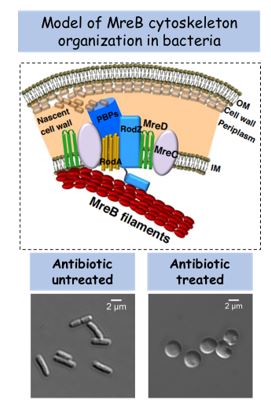 Dr Sutharsan informs, “Largely, solutions to antibiotic resistance problem is directed towards discovering new antibiotics and therapies. However, there are hundreds of existing antibiotics that could be made more effective to kill bacteria. But these antibiotics are not considered as compelling options in the market due to their poor efficiency or lack of understanding. In this project, we will investigate one such antibiotic and attempt to assess its response to the killing agent. By understanding how bacteria escape the antibiotic action, we hope to find effective strategies to combat them.”
Dr Sutharsan informs, “Largely, solutions to antibiotic resistance problem is directed towards discovering new antibiotics and therapies. However, there are hundreds of existing antibiotics that could be made more effective to kill bacteria. But these antibiotics are not considered as compelling options in the market due to their poor efficiency or lack of understanding. In this project, we will investigate one such antibiotic and attempt to assess its response to the killing agent. By understanding how bacteria escape the antibiotic action, we hope to find effective strategies to combat them.” The laboratory of phage-bacteria interaction will be established and led by Dr Sutharsan at SRM University-AP, where he will be relentlessly working on various aspects of bacteriology including antibiotic resistance, bacteriophage engineering, and therapy. Sharing his plans of advancing the work, Dr Sutharsan says “In the near future, we are planning to connect with the clinicians and explore the possibility of taking our research findings to actual patients – a bench to bedside model of research.”
Continue reading →

